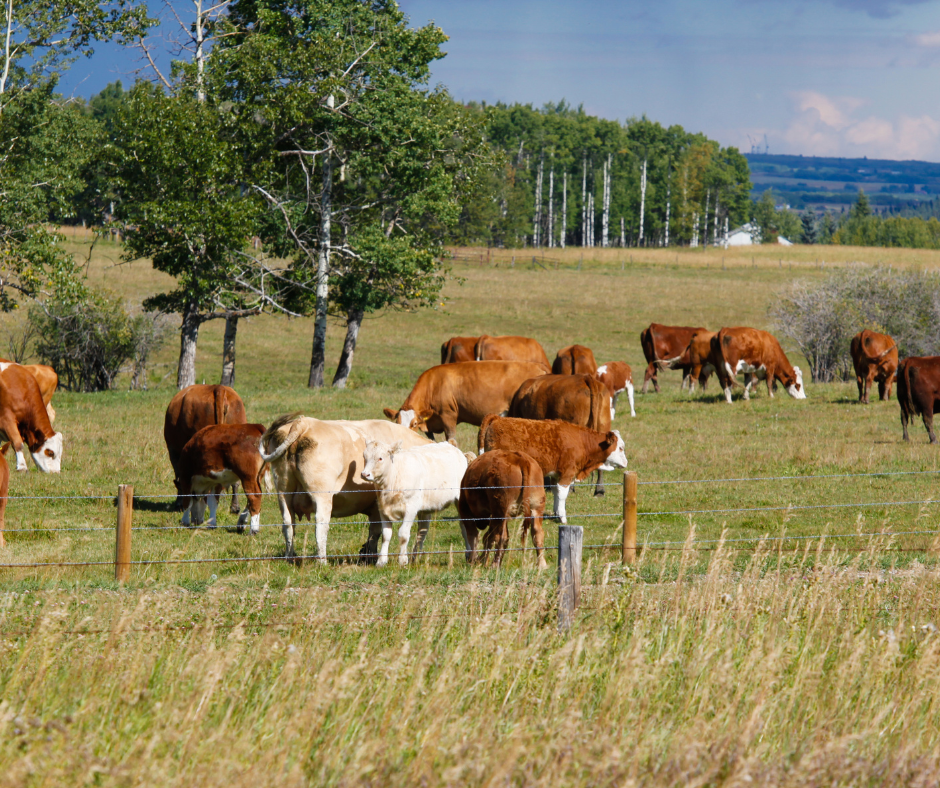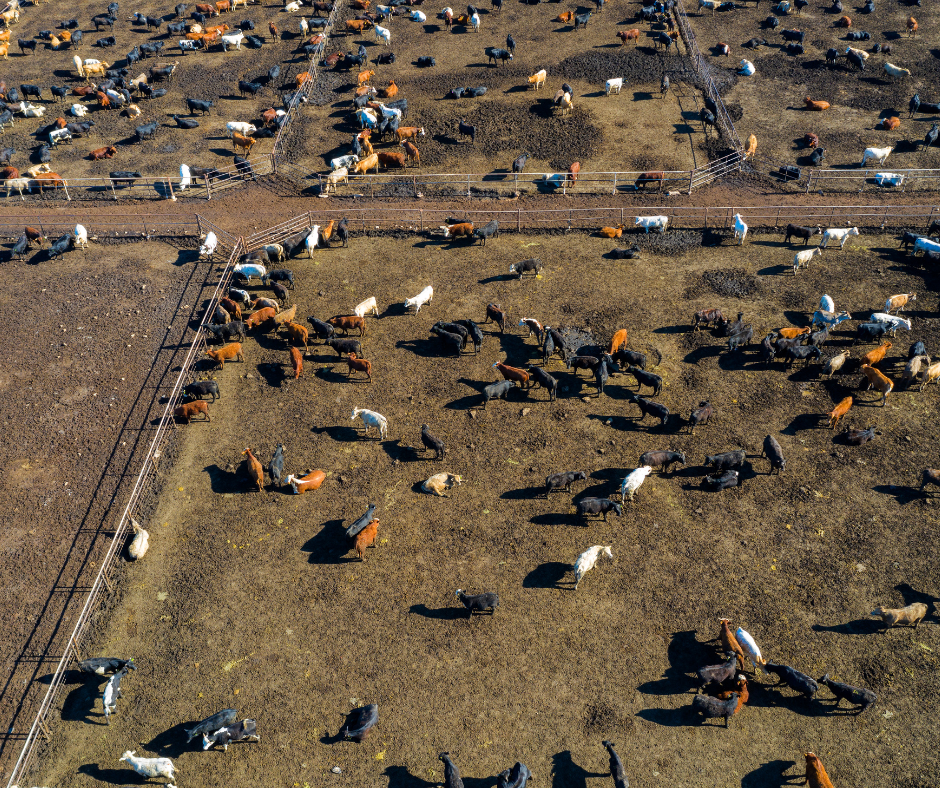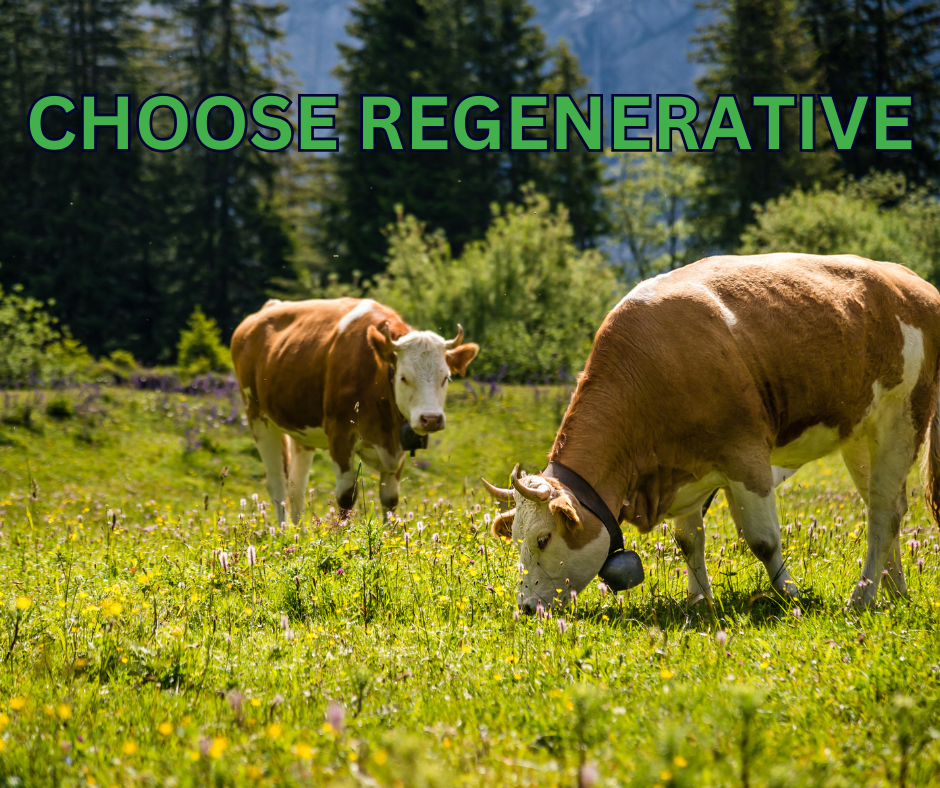
In recent years, the world has increasingly focused on sustainability and environmental preservation; climate change has become a common discussion rather than a topic that causes eye rolling and avoidance. Within this topic, agriculture—especially livestock farming—has come under scrutiny for its environmental impact. Often we talk about livestock farming, or ranching, in blanket terms, but that couldn’t be farther from the truth. Regenerative ranching goes beyond sustainable practices, aiming not just to minimize harm to the animals, but to actually restore and enhance the land and ecosystems on which it depends which leads to a positive impact on the world at large. When compared to conventional cattle ranching, regenerative practices offer numerous benefits that not only improve the health of our planet but also support more resilient and ethical food systems. Let’s break it down.
What Is Regenerative Ranching?
Regenerative ranching is an approach to raising livestock that emphasizes land stewardship, soil health, and biodiversity. Rather than focusing solely on production and numbers, often at the expense of the land and animals, regenerative ranching works with nature to rebuild ecosystems, store carbon in the soil, and promote animal welfare. Core practices of regenerative ranching include rotational grazing, maintaining cover crops, restoring grasslands, and integrating agroecological principles to regenerate the land and ecosystems.
By mimicking natural processes, regenerative ranching supports the symbiotic relationship between animals, plants, and the land. The result is not just a more sustainable ranching operation and healthier livestock, but also one that actively improves the soil, water, and biodiversity of the land.
How Does It Compare to Conventional Cattle Ranching?

In contrast, conventional cattle ranching, often called feed lot ranching (yuck!), relies on monoculture (monocropping) farming techniques, extensive use of synthetic fertilizers, pesticides, and industrial feeding practices. Cattle in conventional systems are typically raised in confined animal feeding operations (CAFOs), where they are fed a diet that may include grains and other unnatural foods, resulting in poorer health outcomes for the animals and a higher environmental footprint.
Here’s my best comparison of how regenerative ranching compares to conventional practices:
1. Soil Health and Carbon Sequestration
In regenerative ranching, rotational grazing is key. This practice involves moving cattle between different pasture areas, allowing the land to rest and regenerate. Over time, this helps improve soil fertility, increases organic matter, and boosts microbial activity in the soil. As plants grow and photosynthesize (this is like breathing, but for plants), they pull carbon from the atmosphere and store it in the soil, which helps mitigate climate change. Healthy, well-managed grasslands can even act as a carbon sink, drawing down more carbon than is emitted by the livestock themselves (we’re talking about poop by the way!).
On the other hand, conventional cattle ranching practices often lead to soil degradation, compaction, and erosion. The overgrazing of land can strip it of its natural vegetation, which decreases the soil’s ability to capture carbon and increases the risk of desertification. In some cases, conventional ranching contributes to deforestation, which releases large amounts of carbon into the atmosphere. And finally, the layering of manure causes increased carbon emissions, which is why the finger is so often pointed at the cattle industry in regard to global warming.
2. Biodiversity and Ecosystem Health
Regenerative ranching systems prioritize biodiversity by creating a variety of habitats for plants, animals, and insects. The diverse plant species that grow in healthy grasslands provide habitats and food for a range of wildlife, while the grazing animals help maintain these ecosystems by preventing certain plants from overgrowing and encouraging new plant species to thrive.
Conversely, conventional ranching often leads to monoculture (mono-cropped) fields, which lack the ecological diversity necessary for healthy ecosystems. This reliance on a single crop or grass species makes ranching systems vulnerable to pests, disease, and climate variations, reducing resilience and increasing reliance on chemical inputs like pesticides and herbicides. It also strips the soil of nutrients and can devastate large plots of land for years afterward. I don’t know about you, but I don’t enjoy eating a bowl of plants that have been sprayed to high heaven with pesticides that are destroying my gut health and increasing my risk of c@ncer, so why would our cows, or pigs, or chickens?
3. Animal Welfare
Regenerative ranching supports better animal welfare by focusing on pasture-based systems where animals can graze naturally, moving between different areas in a stress-free environment. The practice of rotational grazing helps reduce parasite load and provides the cattle with a varied, nutrient-rich diet, leading to healthier animals with a higher incidence of phytonutrients in their nutritional profile that gets passed onto us when we consume them. Additionally, the ability to roam means their excrement (back to poop again…) is spread out so they aren’t forced to stand, lay and live in manure, which decreases the incidence of disease and thus overuse of antibiotics.
In contrast, conventional cattle ranching often involves confinement, where cattle are raised in crowded conditions with little to no access to pasture. These systems lead to higher rates of disease, injury, and stress for the animals. Moreover, animals in confined systems are often treated with antibiotics and hormones to keep them healthy and to promote rapid growth, which raises ethical concerns regarding both animal welfare and human health.
4. Water Management
Regenerative ranching also places a heavy emphasis on water conservation. By improving soil structure and enhancing vegetation cover, regenerative ranching helps water infiltrate the soil more effectively, reducing runoff and improving drought resilience. The deep-rooted plants that grow in well-managed pastures are more capable of storing and filtering water, making water use more efficient. This is especially important in areas like California, Nevada and Arizona, where drought and landslides are becoming more and more common.
Conventional ranching practices, especially in arid regions, can lead to poor water retention in the soil and exacerbate water runoff, which can pollute local water sources. Additionally, large-scale, industrial livestock operations often require vast amounts of water for both the animals and the crops they feed on.
5. Climate Impact
One of the most significant benefits of regenerative ranching is its potential for climate change mitigation. As previously mentioned, healthy soils can store large amounts of carbon, which reduces the overall carbon footprint of the operation. Moreover, regenerative ranching avoids many of the greenhouse gas emissions associated with industrial agriculture, such as those from synthetic fertilizers, pesticides, and the transportation of feed and cattle.
In contrast, conventional cattle ranching is a major contributor to greenhouse gas emissions, both directly and indirectly. Cattle themselves emit methane—a potent greenhouse gas—through digestion, and the clearing of land for grazing can result in the release of carbon stored in forests and soils. And I think you’re sick of me talking about poop by now, so I’ll let that topic lie as I’ve already said it all.
The Future of Regenerative Ranching
As consumer demand for sustainable and ethically produced food grows, regenerative ranching offers a promising solution to some of the most pressing environmental issues facing our planet. While transitioning from conventional to regenerative ranching can be a challenge, especially for large-scale producers, the benefits far outweigh the initial investment in time and resources. By improving soil health, increasing biodiversity, enhancing water retention, supporting animal welfare, and mitigating climate change, regenerative ranching presents an opportunity to create a food system that is healthier for both the planet and the people who rely on it.
I think it’s clear that regenerative ranching is a compelling alternative to conventional cattle farming, offering a more holistic, sustainable approach that benefits not only the land and animals but also the global climate. By focusing on restoration rather than depletion, regenerative practices help create a future where agriculture works in harmony with nature, ensuring the long-term health of our planet and the food systems that sustain us. So go support local farmers and regenerative ranchers- the more we support them, the more the demand will show that this is a better way, and the more everyone will listen!
Still Unsure- Try it Out!
Please check out Sol Fed Ranch, a company created by two regenerative ranchers, Melissa and Dakota, who are doing it right! Their livestock guardian dogs are raw fed, and they created a raw dog food recipe from 100% grass fed and finished regeneratively raised cows, formulated by me! I’d like to make it clear that I receive no royalties from your purchase, I simply know that it’s a great recipe because I formulated it in the way I would want my dogs to feed, and they’re making it using top quality ingredients. You can learn more about it on their Instagram!
You can listen to our Raw Remedies podcast episode where they teach all about the benefits of regenerative ranching, even more than what I’ve provided here (and most of what I’ve written, I’ve learned from them!). You can find the episode on my podcast hub, Apple Podcasts, Spotify, YouTube, and more.
Here are some additional resources for reading, watching and learning:
–Link to Stephen Van Vliet’s research on the topic of linking grazing practices and nutrition, and a podcast episode and video breaking it down.
-Comparison of plant based meat alternatives vs true meat: 1, 2, 3, 4.
-Check out “Nourishment: What Animals Can Teach Us About Rediscovering Our Nutritional Wisdom” by Fred Provenza

